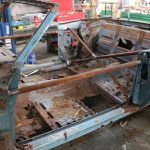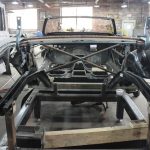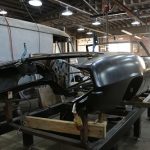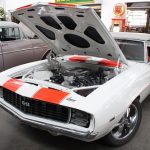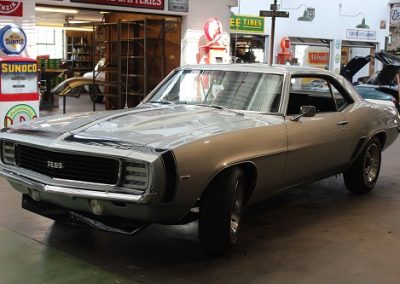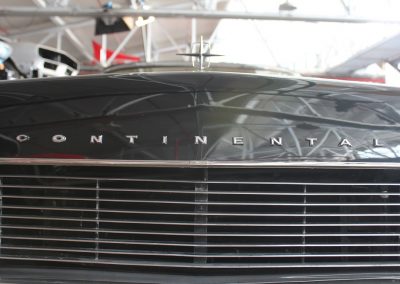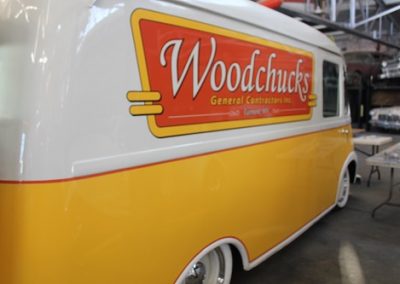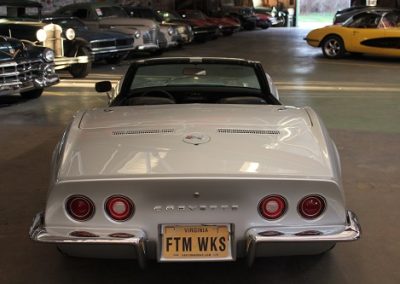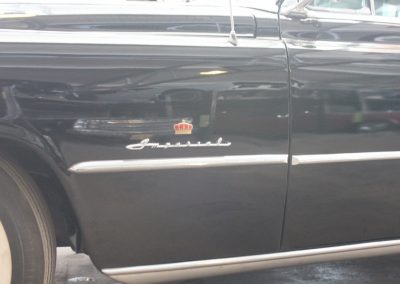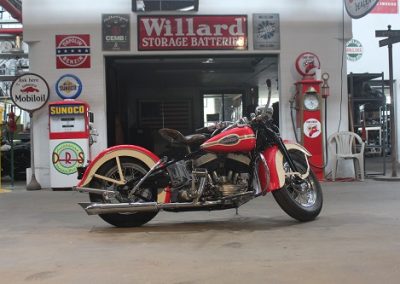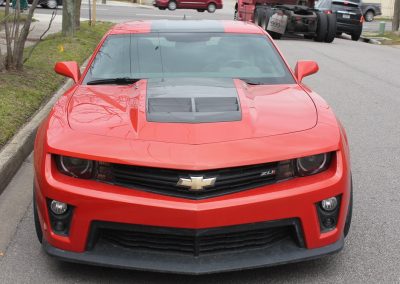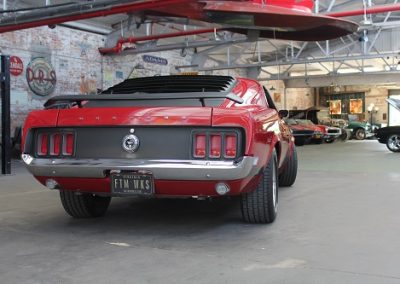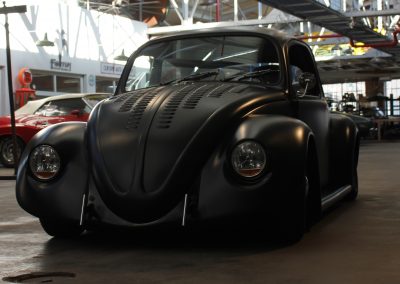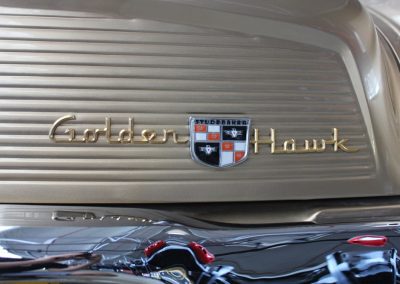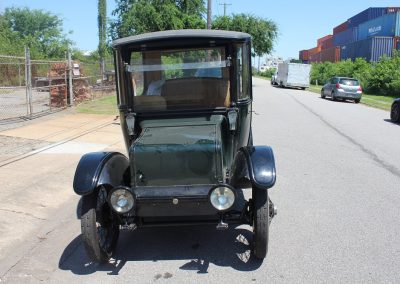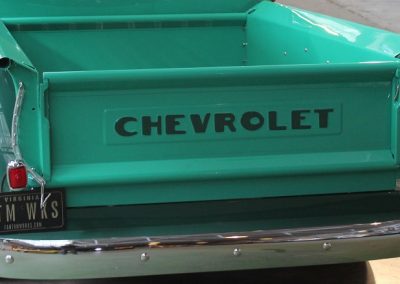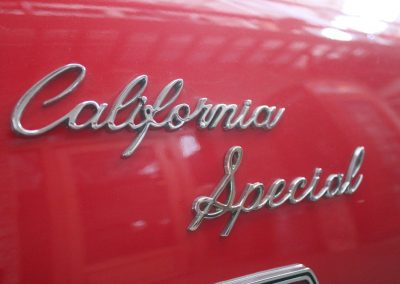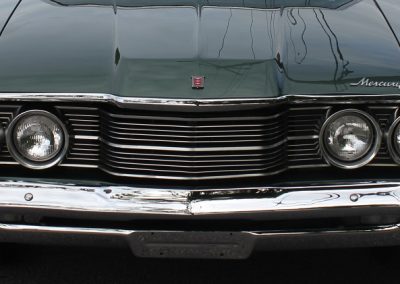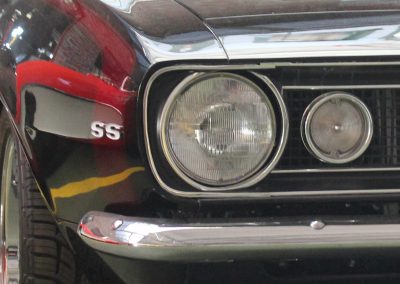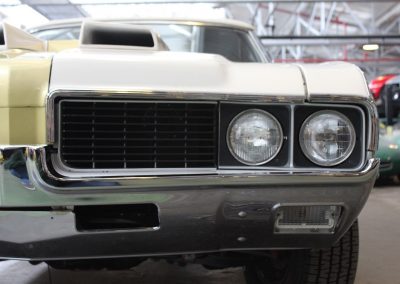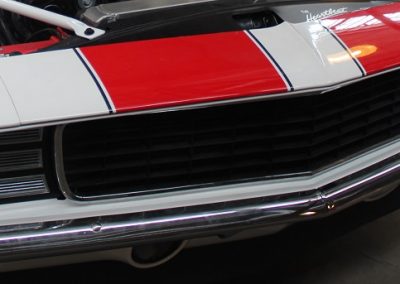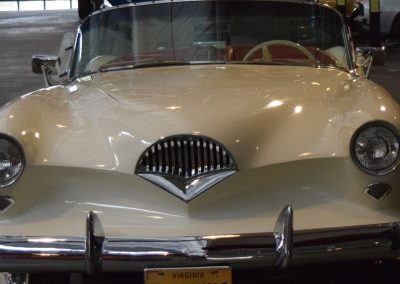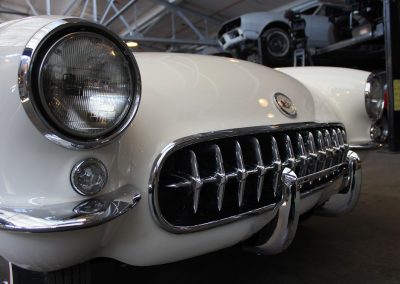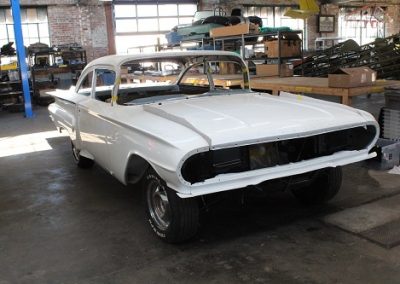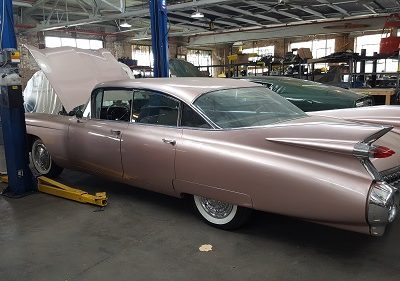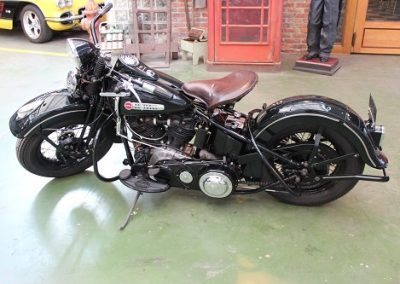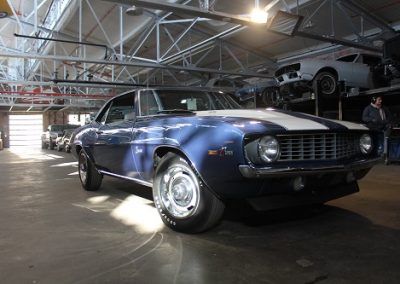1969 Chevrolet Camaro Pace Car

As seen on Season Four of FantomWorks
Owner Insight:
Explore the Project Galleries
Arrival
Disassembly
Strip and Metal Fabrication
Mechanical
Body and Paint
Trim and Detail
Finish
The 1969 Camaro carried over the previous year’s drive train and major mechanical components, but all-new sheet metal, except the hood and trunk lid, gave the car a substantially sportier look. The grille was redesigned with a heavy “V” cant and deeply inset headlights. New door skins, rear quarter panels, and rear valance panel also gave the car a much lower, wider, more aggressive look. This styling would serve for the 1969 model year only. Collectors often debate the merits of smooth, rounded lines of 1967 and 1968 model versus the heavily creased and sportier looks of the 1969.
To increase competitiveness in the SCCA Trans-Am racing series, optional four wheel disc brakes with four-piston calipers were made available during the year, under RPO JL8, for US$500.30. This system used components from the Corvette and made for a major improvement in the braking capability and was a key to winning the Trans-Am championship. The option was expensive and only 206 units were produced.
The Rally Sport (RS) option, RPO Z22, includes special black painted grille with concealed headlights and headlight washers, fender striping (except when sport striping or Z28 Special Performance Package is specified), simulated rear fender louvers, front and rear wheel opening moldings, black body sill, RS emblems on grille, steering wheel and rear panel, Rally Sport front fender nameplates, bright accented taillights, back-up lights below rear bumper; also includes bright roof drip moldings on Sport Coupe. $131.65, 37,773 built. This option could be added to any other option (i.e., SS or Z/28), making the model an RS/SS or a RS/Z28.
The Z28 option was still available with the 302 cid small block. It was backed by Muncie four-speed with a new-for-69 standard Hurst shifter and connected to a 12-bolt rear axle with standard 3.73 gears. The 302 featured 11:1 compression, forged pistons, forged steel crankshaft and connecting rods, solid lifter camshaft, and Holley carburetor on a dual-plane intake manifold. A dual four-barrel cross-ram intake manifold was available as a dealer-installed option.
The 1969 model year was exceptionally long, extending into November 1969, due to manufacturing problem that delayed the introduction of the second generation model planned for 1970. It is a popular myth late-’69 Camaros were sold as 1970 models (due to GM publicity pictures of the ’69 Camaro labeled as a 1970), but they were all assigned 1969 VIN codes.
https://en.wikipedia.org/wiki/Chevrolet_Camaro_(first_generation)







